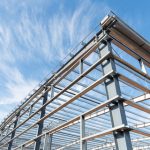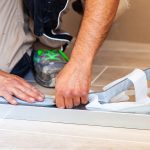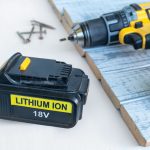A metal roof’s ability to deliver total protection is only as good as the components that make up the roofing system—including underlayment products. Selecting the right underlayment for a metal roof is critical when it comes to delivering protection from eave to peak. In metal roofing systems, underlayment not only helps support safety and performance during the installation, it helps protect the roof deck—and the homeowner’s investment.
Four synthetic underlayment benefits to deliver eave-to-peak protection

Historically, felt underlayments were the standard option for roofing underlayment, including metal roofs. However, felt products tended to be bulky, heavy and degrade if left exposed for too long in the sun. Today, there are several new, synthetic options that are not only lighter and easier to install, and offer four distinct benefits for metal roofs and the roofers who install metal roof systems. Following is a look at four performance benefits synthetic underlayment brings to the roofing system, and how these benefits help metal roof systems deliver total protection.
1. Durability from Eave to Peak
Even small holes in roof underlayment can lead to water infiltration. In addition to foot traffic and scuffs from installers, if you’re installing a metal roof, moving panels around the roof surface creates risk of tears. Synthetic underlayments can be up to 12 times stronger than felt paper. Even among synthetic options, there are differences in toughness, so it’s important to understand a product’s performance attributes. Titanium synthetic underlayment products are known for special durability, and have been shown to resist tears and leaks in real-world boot twist tests.
Unlike asphalt roofs, which typically can be replaced within a few days, replacing a metal roof could take several weeks. Using the right underlayment will help keep the home dry, until the metal panels are installed. Because felt is saturated with asphalt, it starts to dry out and degrade almost instantly when exposed to UV light. In contrast, a tough synthetic underlayment provides peace of mind that the underlayment will withstand the rigors of installation, and keeps the roof protected in the event of rain or condensation during the install process. In fact, some synthetic underlayments are rated for exposure for as long as 180 days, giving you a comfortable window for installation, even when unexpected weather issues arise. This is not a guarantee in all weather conditions.
2. Walkability to Promote Safety
Synthetic underlayments provide a walkable surface, enhancing installer safety, especially for steep-pitched roofs. A textured walking surface helps keep the surface walkable in both wet and dry conditions. When choosing an underlayment, pay attention to the surface features of different underlayment types within a product line. For example, Titanium UDL 30 and Titanium PSU30 feature a patented SURE-FOOT slip-resistant nodular surface that provide outstanding walkability, which is especially important on steep slopes.
3. Temperature Performance in Hot and Cold Climates
Surface temperatures on metal roofs can soar to well over 140 degrees on a typical summer day—higher in some climates. The higher the heat, the faster materials under the roof, including underlayment, can break down, so it’s critical to select an underlayment that can withstand high temperatures. When choosing a self-adhered or synthetic underlayment, check its temperature rating. Self-adhered underlayments not rated for high temperatures could have asphalt backing start to destabilize, soften and drip down the facia.
4. Protection
Even the best-installed roof is subject to the risks of moisture encroachment. Whether that’s a breakdown of fl ashing in the distant future, danger from ice dams or condensation on the underside of metal panels, water finds its way in, and the underlayment is your last line of defense. Many building codes now require self-adhered underlayment at eaves, but self-adhered underlayments may also be recommended on rakes, valleys and penetrations, where large amounts of water can gather. Synthetic underlayments can help protect the rest of the deck. Unlike felt, synthetic underlayments don’t absorb water and are inert to mold, so they can last the life of the roof.
Eave-to-Peak Protection
The benefits of selecting the right roofing underlayment extend beyond metal roofs. Lighter, easier-to-install synthetic underlayments are an outstanding match for today’s varied roofing systems, whether you’re working with metal, tile or asphalt shingles. When you factor in durability, walkability and temperature performance, these new materials are far ahead of felt options, and offer an excellent layer of protection for homes and buildings in a variety of conditions.
Chris Robinson is product manager for synthetic underlayments at Owens Corning Roofing, Toledo, Ohio. Robinson has been with Owens Corning for six years and has managed a number of roofing product lines before taking over the underlayment category. More information about the benefits of synthetic underlayments can be found at www.eavetopeak.com.






